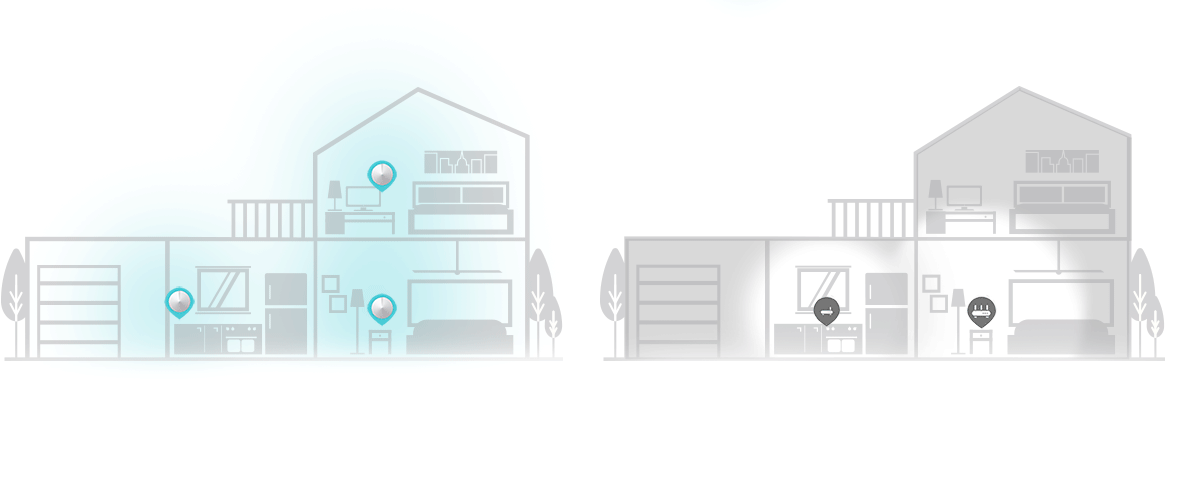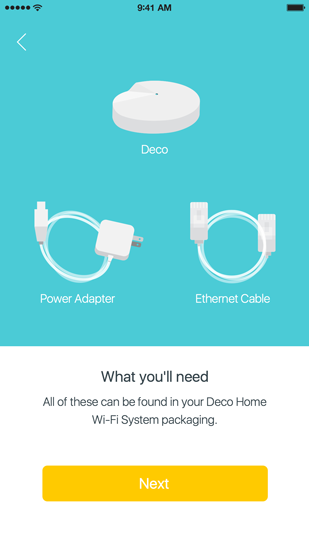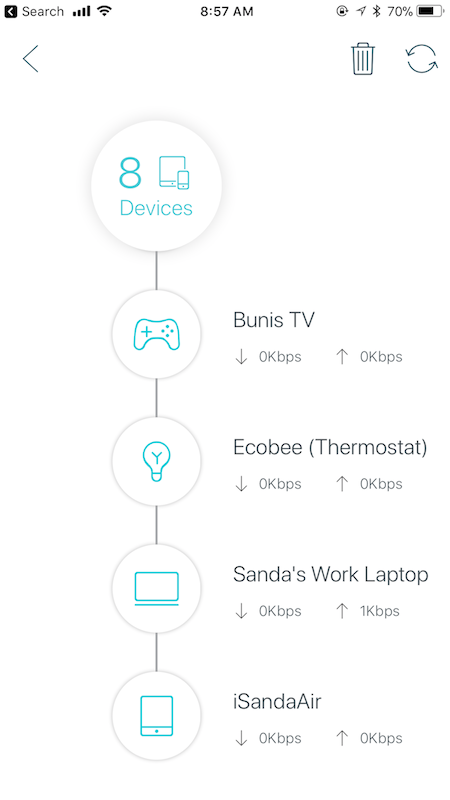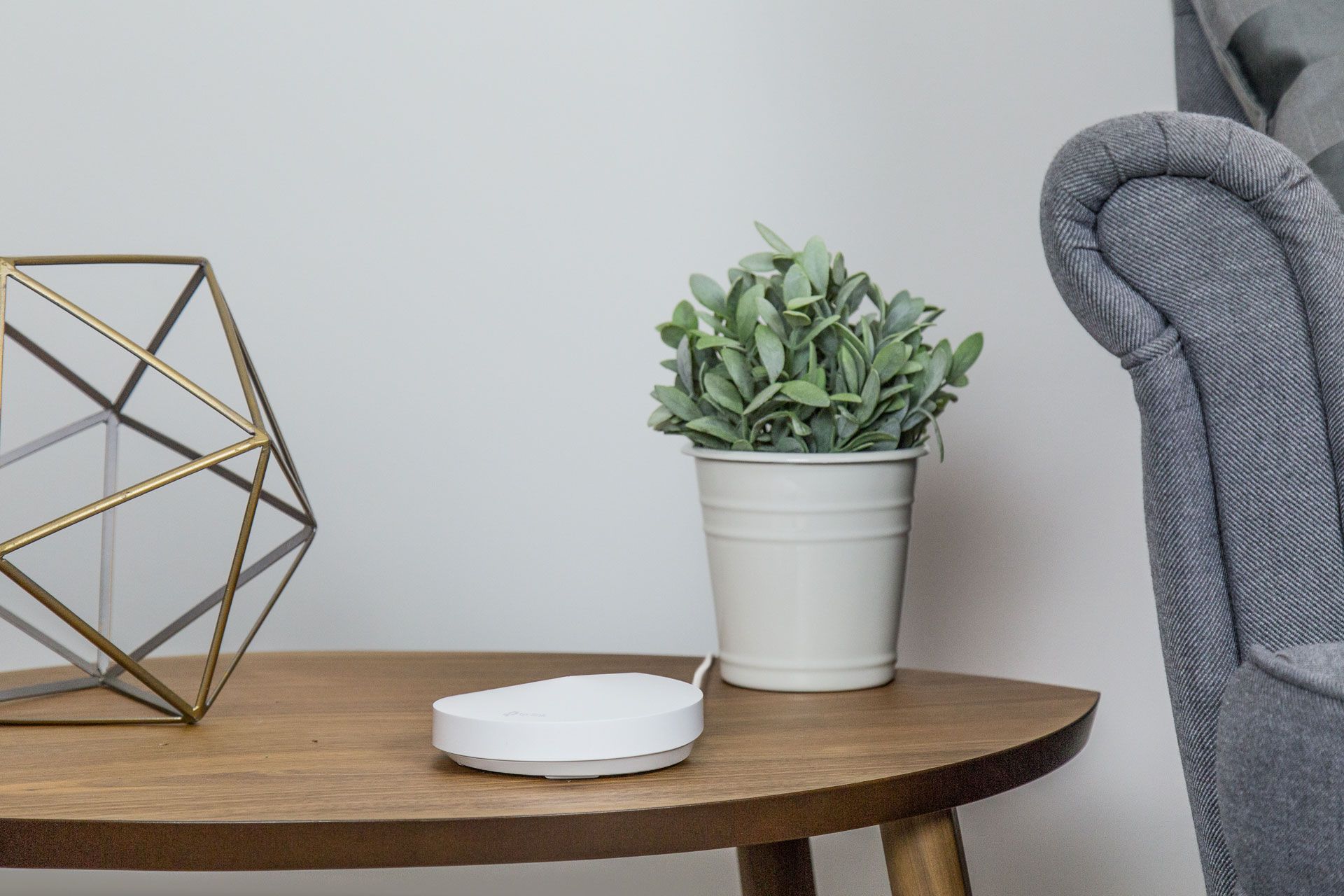TP-Link Deco Whole-Home WiFi
Simple, secure mesh networking

It doesn’t have to be complicated.
Network setup and maintenance used to be something that required a tech savvy person. Port forwarding, QOS, bridge mode—oh my! Modern networking has different priorities: reliable throughput, stability, and security.
In the last year, we’ve seen quite a few mesh systems emerge from major consumer electronics brands, and TP-Link’s take on the system is called Deco. Described as a “Whole Home WiFi” system, Deco is a focused, attractive proposition. They want to empower everyone to set up and manage their own network without hassle, while keeping homes secure in an era of smart devices.
Simple and secure…let’s see how they did.
Mesh Networking
In the past, you’d likely have a modem connected to a single router that distributed the internet service throughout your home. This works perfectly fine in apartments and small homes, but even there you’ll encounter the familiar bugbears of a single-unit system: slowdowns, dead spots, and dropped connection in the fringes of its reach.
To get around this problem, you can either use increasingly powerful transmitters in the single unit, or start distributing the signal through multiple router units working together. In the past, I’ve looked at a system that sent this signal over your home’s power lines. Mesh networking uses WiFi, but it puts multiple radio transmitters in each unit.

The result is a series of individual routers, each one capable of doing double duty as both signal relay and actual router that provides signal to individual devices on the network. Most importantly, the three routers aren’t serving independent networks—it’s all the same WiFi network, as far as your devices are concerned, and it’s the mesh network’s job to seamlessly pass you from one unit to the next as you move through your home so that you’re always connected to the unit that can give you the strongest signal.
Deco M5 Hardware
TP-Link’s Deco units (so far the only model in the family is the M5) aren’t the most technologically advanced out there, but they have the basics covered: each unit packs a dual-band transmitter, four beamforming antennas, two gigabit ports, an indicator LED, Bluetooth 4.2, and a quad-core 717MHz processor that keeps it all humming along.

They’re also among the most attractive—if not the most attractive—of the mesh options from a physical standpoint. Each M5 is a sleek, low profile disk with a beautiful white shell, simple branding, and a single LED on the top. It’s like having a trio of cute flying saucers blanketing your home in internet signal.
There are really only two complaints I can come up with regarding the hardware:
- I wish the transmitters were tri-band rather than dual-band. With dual-band transmission, one of the bands is doing double duty maintaining the network rather than having two dedicated bands for routing and one dedicated to network integrity like on a tri-band system. That being said, the performance impact is negligible for my usage…Canadian internet isn’t fast enough to have it be noticeable
- I wish there were more gigabit ports per unit. Two is a decent number, but in a home theatre or office setup, I might easily end up with more than two devices that I want to hardline in for optimum streaming/downloading performance. Moreover, in a case like mine where the home theatre Deco unit is also the one connecting to the modem, one port is taken up by that connection, leaving only a single port for actual use. These are minor issues though, and overall I’ve been thrilled with Deco from a hardware perspective.

The core of any mesh system is its software though, so let’s dig into that side of the equation.
Software
One of the complaints I saw in other reviews of the M5 is that the setup process relies heavily on Bluetooth. Using the Deco app on your smartphone, you’re walked through a process that requires the phone to connect to a Deco unit over Bluetooth and set things up from there.

I understand that Bluetooth can be unreliable for some people, but I had to set Deco up multiple times (more on that later) and not once did I have an issue—neither establishing a connection, nor holding one for the duration of the brief setup process.
I mention this to balance out the negativity with some (admittedly anecdotal) good news: it works as advertised, and setup is very easy. Adding devices to the network once you’ve set up the first is similarly very quick (the starter kit comes with three units, like most mesh offerings), and up to ten Deco M5 units can be linked together.
The entire Deco experience is controlled via the smartphone app—there is no web access panel, much to the chagrin of networking purists. The app is sleek, functional, and non-threatening. You’ll need a TP-Link account to use it, but there’s a good reason for that: the accounts allow for user roles.
For instance, I updated the firmware on my mum’s Deco units this morning, which doesn’t seem like a very interesting statement until I tell you that I did it from the comfort of my home in a different city. This is possible because she’s assigned my TP-Link account as an administrator for the Deco network in her home (you can assign up to 8 administrators). This way, while she’s the network owner, I can use the app to manage her network remotely if I have to.

The app shows the active Deco units along the top, with icons and colour coding to indicate issues with individual units, and it also has a speed test section that helps you diagnose issues. If the speed test shows slow speeds coming into the system, you’ll know that the problem is further upstream than Deco.
I also appreciated the device listing, which shows you everything connected to the network and allows you to assign it a name and type for easy recognition. You can go a step further too by creating “profiles” for family members and assigning devices to them (identified by MAC address). Then, you can selectively prioritize performance or turn off access entirely for a profile, shutting down internet connectivity for all their devices without having to do it manually for each.

A great way to get kids to come down for a meal, I’m told.
There’s a global control for QOS (Quality of Service) that can help you prioritize a certain kind of traffic for the network, but I found that the standard profile was the best balance. Plenty of more advanced features exist as well, including integration for Amazon Alexa (but not Google Voice) in case you want to configure network settings by voice—what a time to be alive!
A small detail that I appreciated is the ability to configure the indicator LED to turn off at night, with configurable times, so the light doesn’t bother you if a unit is nearby while you sleep. That’s thoughtful of them. You can also turn the LED off entirely if you prefer.

Security
Perhaps the most unique aspect of the software is its security features though.
Deco comes with 3 years of router-based antivirus and threat protection, powered by Trend Micro. This system, called HomeCare, prevents intrusion attempts, blocks access to malicious URLs, and automatically quarantines infected devices. Each of these three features can be turned off individually, and there’s a log available that shows intrusion attempts.
The intrusion prevention is particularly useful for modern homes. While most smart devices like phones, tablets, and computers have their own self-defence systems in place, smart home tech—like smart lighting and home security cameras—often do not. By keeping Deco’s security features on, you can protect everything connected to your network at the router level.
Peace of mind is a very compelling feature.

Performance
I first set Deco up in my apartment. Mesh is overkill for an apartment, in most cases, but I live in an old building with very thick walls that aren’t kind to signals, so it was a natural testing opportunity.
I was excited to have a router in the office—meaning I could connect both my computer and Shannon’s via ethernet—plus one near the home theatre setup and one on the opposite side of the apartment, in the bedroom. After some initial teething pains (because of pre-release firmware not playing nice with a network switch I was using), all was well. But I needed to see how this system behaves in its intended environment: a standard family home.

In my mum’s three storey home, Deco is remarkably good at keeping speeds and signal strength consistent. One Deco unit is in a room on the top floor with the modem, another is on the opposite end of that floor in an office, and the third is in the basement apartment—two floors down!—and yet the entire home, including the ground floor, has great WiFi coverage. That’s impressive.
The Deco system is capable of a theoretical max throughput of 400Mbps on the 2.4GHz network and 867Mbps on the 5GHz, both of which are significantly faster than the 150Mbps speeds that we actually get on our internet plan. There were no speed issues for me at home (setting aside the switch thing, which was a beta firmware problem), and any issues with speed at my mum’s house have been the fault of Rogers, her internet service provider.

Finding a Home for Deco
My first thought when exploring the Deco system was: who is this for? Mesh networking in general is known for being targeted at the general public rather than geeks, and Deco seems to be aiming in the same general direction.
Generally speaking, Powerline setups will be more effective in difficult contexts (with thick stone walls or other structural impediments), but they’re also more of a hassle to set up and manage. Similarly, for most apartments and even small homes, you can usually get away with a single-unit router system like TP-Link’s own Archer series, which packs in powerful transmitters to spread the signal further than most ISP-provided modem routers.
That still leaves a pretty huge audience: basically everyone in medium to large sized suburban homes. That’s where Deco shines, not only because it can blanket those homes in stable internet, but because it does so with minimal setup effort, and virtually no maintenance or tweaking required on an ongoing basis. Firmware updates happen automatically to keep the system up to date, security keeps everyone on the network safe, and the sleek hardware is understated and easy to fit into your home decor.
Even as a geek, I appreciate Deco’s elegance. Being able to remotely troubleshoot issues on a family member’s network, or selectively prioritize performance, or even just keep an eye on what’s connected to the network all from my smartphone is terrific.
It’s the way networking should be.
A starter pack of 3 Deco units retails for $399 CAD, but nowadays you can sometimes find them on sale for up to $100 less, so keep your eyes peeled.